IN FOCUS: How climate change can threaten food production in Singapore
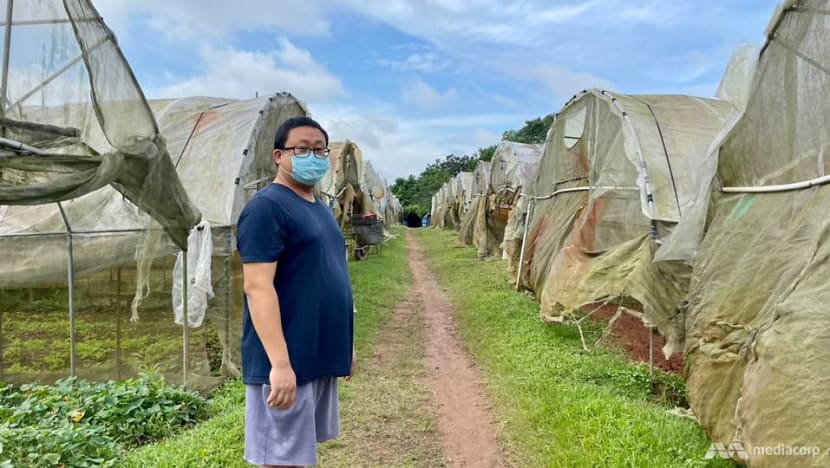
Mr Chai Nian Kun runs his organic farm Fire Flies Health Farm on a three-hectare plot in Lim Chu Kang. (Photo: Cheryl Lin)
SINGAPORE: While some cheer the cool weather when storms hit Singapore, 40-year-old farmer Chai Nian Kun says to himself: “Jialat” – an expression of concern over what is to come.
Heavy rain is not uncommon in tropical Singapore.
But days of continuous downpours can wreak havoc on many of his organic vegetables, which grow outdoors on a three-hectare plot in Lim Chu Kang.
Too much rain can inundate the greens or encourage the growth of pests that feed on them. Last month, short but heavy thundery showers across several days did just that to his crops.
Even though it is the monsoon season, Mr Chai said it has been raining “much more than it should”, an assessment he has made about the past few years as well.
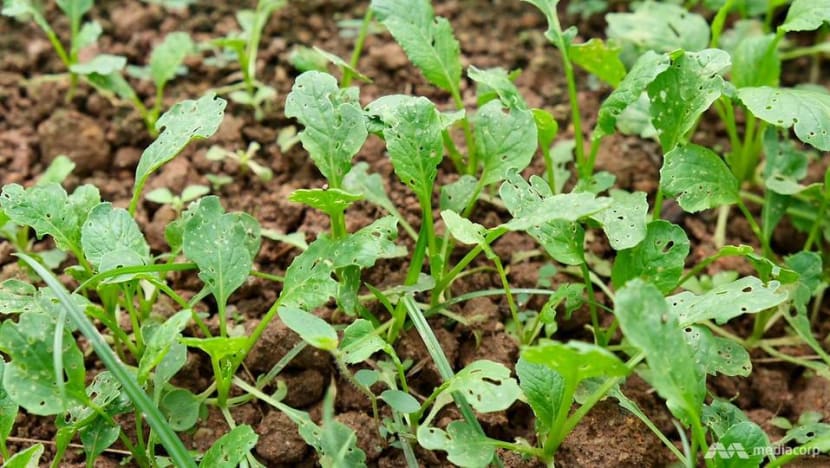
Not only has rain been beating down harder, but it has been getting warmer too, he said.
“If you compare this to many years ago, the seasonal effects were clearer. But now (the) climate change effect has turned everything upside down.”
Climate change – expressed here through hotter temperatures, more rainfall and rising sea levels – is putting local food production under stress in many different ways, experts said.
It is a pressing concern, they added, especially in light of the island’s ambitions to strengthen its food security.
Singapore is aiming to produce 30 per cent of its nutritional needs by 2030, up from the less than 10 per cent it currently produces.
READ: Singapore’s farms face an even greater challenge in a post-COVID-19 world
As a nation heavily reliant on food imports, Singapore’s strategy of source diversification has served it well, but the focus on local production is important because it is “our most secure source of food”, said Mr Goh Wee Hou, the director of the Food Supply Strategies Department at the Singapore Food Agency (SFA).
“It will help to mitigate our reliance on imports and serve as a buffer during supply disruptions.”
“What we want to achieve is for 30 per cent of each ‘plate’ to be locally produced, though the proportion of food groups that constitute this 30 per cent will continue to evolve as we approach 2030," he added.
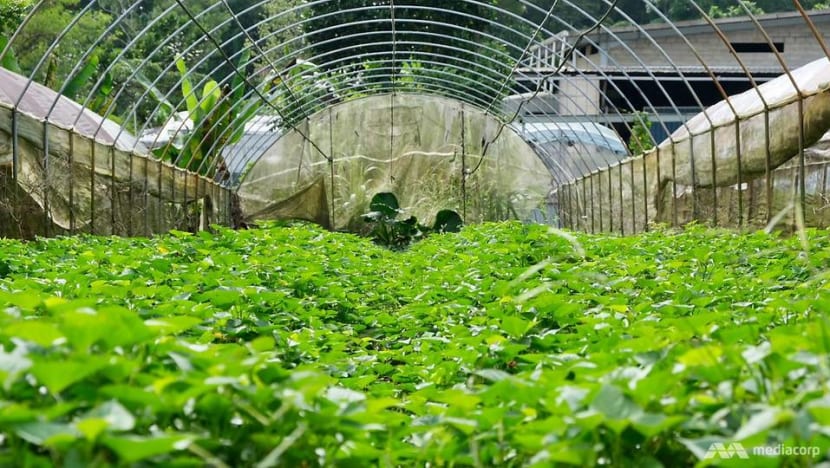
Singapore has about 220 farms, producing mainly vegetables, eggs and fish.
In 2019, these farms produced 14 per cent of Singapore’s leafy vegetable needs, 26 per cent of its eggs and 10 per cent of fish.
Could climate change stem these aspirations to grow more?
ISLAND HAS BECOME WARMER AND WETTER
Temperature records dating back to 1948 show that Singapore has warmed, in particular from the 1970s onwards, said Dr Benjamin Horton, the director of the Earth Observatory of Singapore.
“On average, the air temperature in Singapore has increased 0.25 degrees Celsius per decade. This is about double the global average," he said.
He explained this is because Singapore suffers not just from the impact of global warming, but also the urban heat island effect, where asphalt and concrete from urban development have replaced greenery and waterways, trapping more heat.
READ: Commentary: Singapore could be a model for cooler cities in a world heating up
Higher rainfall is linked to that. Though levels fluctuate over time due to natural processes, records from as far back as 1875 reveal a “significant increasing trend from the 1980s to present day”, Dr Horton said.
“Rainfall totals have been increasing around a centimetre per year. If we look at the last decade, it was the wettest on record.
“The total volume of rain has been bigger, but the total duration has also been shorter. That obviously means it has more intensity, leading to greater frequency of urban flooding.”
READ: How Singapore's mangroves can contribute in the battle against climate change
Today, the average sea level around the island today is 14cm above pre-1970 levels, said the Meteorological Service Singapore (MSS) in March this year in its annual climate assessment.
Such trends will come to affect the way Singapore produces food – be it eggs, vegetables or fish, in outdoor or indoor farms, according to Professor Paul Teng, adjunct senior fellow at Nanyang Technological University’s S. Rajaratnam School of International Studies.
It also very likely means that food production costs – and consequently, food costs – will increase in Singapore, said Dr Horton.
HOW VEGETABLES ARE AFFECTED
For Mr Chai, the changing weather conditions mean vegetables are harder to grow, including certain popular varieties like chye sim and xiao bai cai.
He said that these species, brought in by the population’s Chinese ancestors, grow better in cooler, windier conditions.
“Growing these vegetables year-round was almost no problem in the past when Singapore’s weather wasn’t so hot … But now it’s different.”
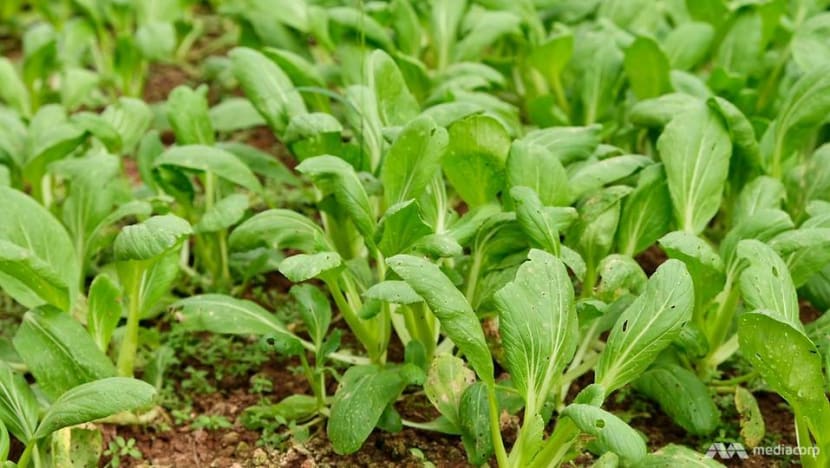
The changeable weather is also not good for the vegetables, such as when it pours but then becomes scorching hot afterwards, he told CNA.
The farmer added that all this has made it more difficult to predict yields, which impacts operations.
“Whether there is good yield or not is up to the weather. And now, we never know what the weather will give us.”
Evelyn Eng, 76, who has been running Green Circle Eco-farm for about two decades, shared this experience. Her plot is also an organic outdoor farm.
“There was one customer who used to come every week for two to three kilograms of kailan. But after a while, I wasn’t able to supply him anymore because sometimes I had it, sometimes I didn’t,” said Mdm Eng.
She also pinned this on the fact that kailan is more suited for cooler climates but Singapore has become warmer.
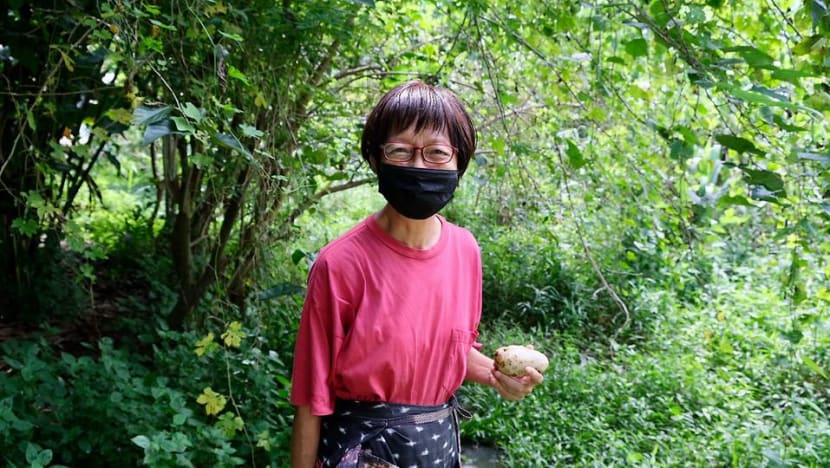
“I noticed also that even when there were no monsoons, the vegetables somehow, year after year, seemed to decline a bit and were not doing so well. The yield kept on dropping.”
On the other hand, indoor high-tech farms are more shielded from the impact of these weather changes, said Prof Teng.
They vary from hydroponic farms to vertical farms with artificial lighting and temperature-controlled environments. However, they are only protected to a certain extent.
“If the temperature goes up, the energy expense of cooling and maintaining the conditions to favour growth also goes up,” said Prof Teng, an expert in food security who has been studying the topic for over three decades.
This applies to Singapore’s egg farms as well, most of which are indoors.
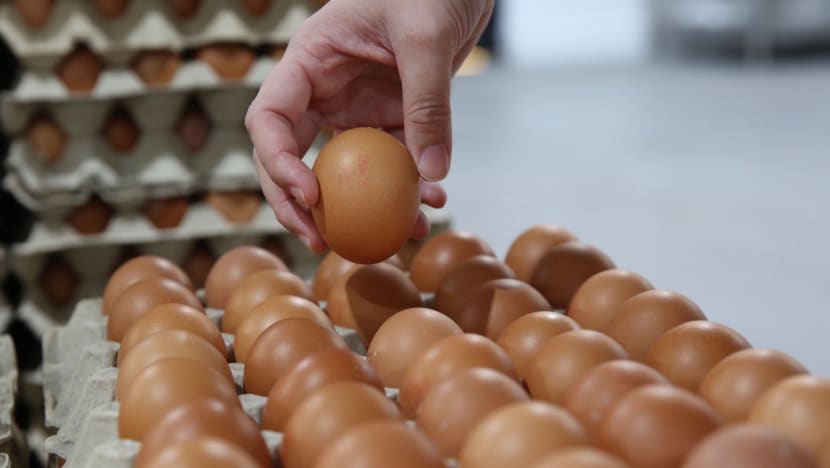
Chew’s Agriculture, an egg farm, added that climate change could jeopardise its supply chain, especially its feed supply for the chickens.
“The warming climate could result in poor harvest and/or inferior quality of critical raw ingredients,” the firm said.
FISH PRODUCTION THE MOST VULNERABLE: PROF TENG
Out of the three categories, fish production is Prof Teng’s biggest concern.
“I would consider our fish aquaculture to be most vulnerable. The reason I say this is because most of our fish farming is still done in the open seas, even by big farms,” he told CNA.
There are 109 sea-based fish farms here and 12 land-based ones, according to SFA’s website.
Environmental changes affect farms differently, based on their location, their systems and the type of fish they produce.
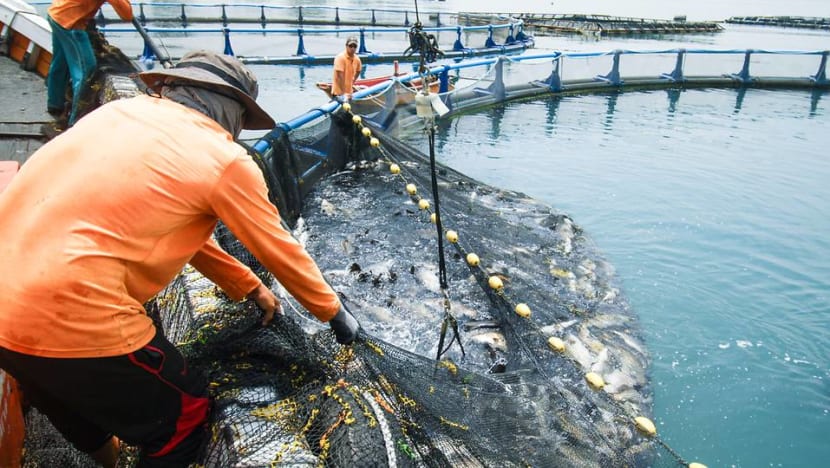
For Barramundi Asia, which nets 700 tonnes of fish a year, the increase in water temperature may help their livestock grow faster.
“But the thing is, what also thrives in warmer temperatures is bacteria, viruses and microbiomes,” said Tan Ying Quan, the firm’s senior business development manager.
He also said “shifting climatic patterns” could contribute to this, adding a layer of variability.
While there has not been a severe uptick in the incidence of health issues, it is concerning because “all commercial operations require predictability”, he said.
That comes on top of possible water salinity or pH changes, caused by having more carbon dioxide in the atmosphere or changing rain patterns.
Mr Tan is not certain whether and how these will impact his farm because they are not well-researched in context of Singapore’s waters, he said.
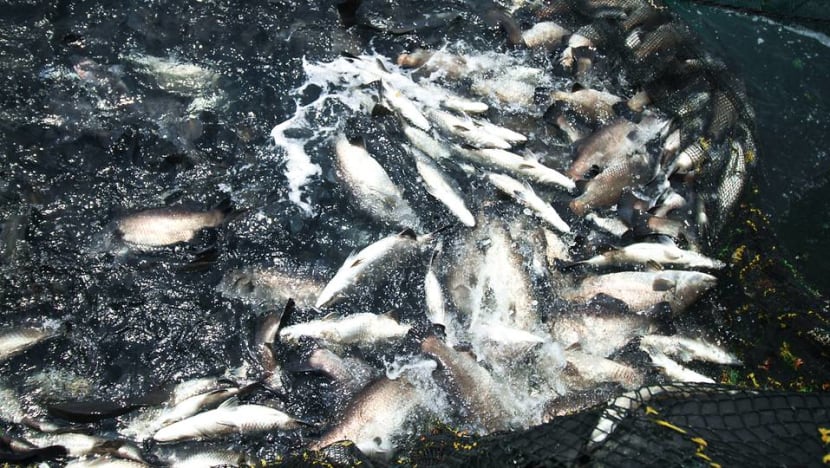
But he counts himself lucky because the farm has not suffered from harmful algal blooms, which involve toxic overgrowth of algae.
The phenomena wiped out about 500 tonnes of fish in 2015, causing farmers losses of millions of dollars.
The main cause of such blooms: runoff water with excessive nutrients, such as from fertiliser use in agriculture, flowing into the sea, according to Prof Teng.
Coastal fish farms, also known as kelongs, are more likely to suffer from this because they are nearer the shore with weaker currents.
This risk mounts with more severe expressions of climate change. Warmer water temperatures encourage algae growth and erratic rainfall patterns may cause more nutrient runoff.

Though Mr Tan’s farm is deeper in the sea where there are stronger currents, he is still wary of the risk: “While we don’t have harmful algal blooms, I don’t think it’s something that will never happen.”
USING TECH TO MAKE FARMING MORE LIKE “MANUFACTURING”
To deal with environmental changes, Barramundi Asia has invested more in surveillance technology, using data collection and monitoring to better understand how climate change is affecting its fish.
“We then step up efforts to ensure (infrastructure) is in top condition so that if there are weather patterns that create stress, our fish are still comfortable,” he said.
For example, with higher temperatures, there is more biofouling, so the nets are cleaned out more often to make sure they do not get clogged up.
With help from SFA, another outdoor vegetable farm, Ho Ka Clean, has implemented an electrical film roll-up system, with a greenhouse roof that automatically opens and closes depending on the temperature and weather, to better protect its produce.
WATCH: Singapore Farms should tap technology to protect crops: President Halimah
“This is why technology – with the important advantage of being resistant to climate change – is the key enabler to help farms boost capability and productivity,” said SFA's Mr Goh.
He noted how farming technologies, such as indoor multi-storey LED lighting vegetable farms or Recirculating Aquaculture Systems can produce 10 to 15 times more vegetables and fish per hectare than traditional vegetable and land-based fish farms.
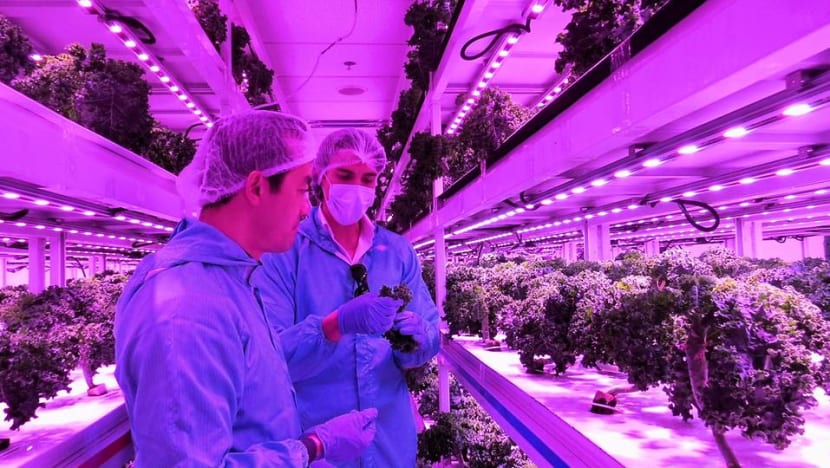
Ultimately, SFA envisages farming to become “like manufacturing – where production takes place within a controlled environment with a defined input”, he told CNA.
“The result is an assured and consistent output, and a predictable way to address the effects of climate change and extreme weather.”
Crucially, it can also “tighten the food production loop, improve circularity” and thus, reduce the impact of food production on the environment, he said.
For instance, Chew’s Agriculture is completing a waste-to-energy plant that will allow it to convert chicken manure into electricity.
LISTEN: Feeding the planet and heating it up: how agriculture impacts our environment
WHY SOME FARMS DON’T USE TECH
Even with all the touted benefits of technology, some farmers wave away the suggestion.
They include 62-year-old Peter Ong, the owner of Sin Bee Fish Farm, a kelong that produces 10 tonnes of fish a year.
“The sum of money is a lot to invest. It exceeds what we are able to afford so I’ve never really considered it before,” said Mr Ong, who farms sea bass and groupers.
This is despite the fact that he believes changes in the water might be behind the slowing growth of his fish.
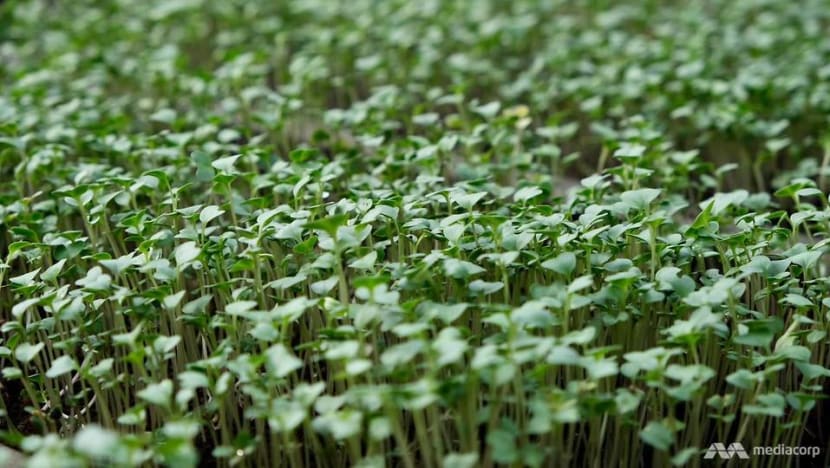
For others like Fire Flies’ Mr Chai, the investment might not bear fruit quickly enough to make sense.
The lease for his plot is due to expire in end-2021, following a two-year extension he got in 2019.
“We will try to adopt the technology in our means … but usually high-tech stuff is very expensive, you pour in the money, and it will take a while before you see the results,” he said.
Prof Teng added: “The bottom line is that if you have bottomless pools of money, technology is the solution. But a lot of our smaller farmers do not.”
GROW WITH THE FLOW
Some also do not feel that they need technology to deal with climate change.
Take Mdm Eng for instance, who said her solution is simply to grow whatever is growing best at the time in her “food forest”, with over 100 varieties of plants.
That would be better than forcing nature to produce a specific set of crops, she said.
“I tell new customers, sometimes you have to order a basket and we put whatever vegetables we have … This is what nature dictates. You have to eat according to what nature can give.”
She has also shifted her focus towards local “kampong” vegetables which “flourish without much labour at all”.
These include sweet potato leaves, moringa leaves, wild watercress, asystasia and wild pepper leaves.
“If you’re willing to eat these native kampong vegetables, you don’t have to worry about climate change,” she said, adding that the greens continue to grow “extremely well” in spite of weather changes.
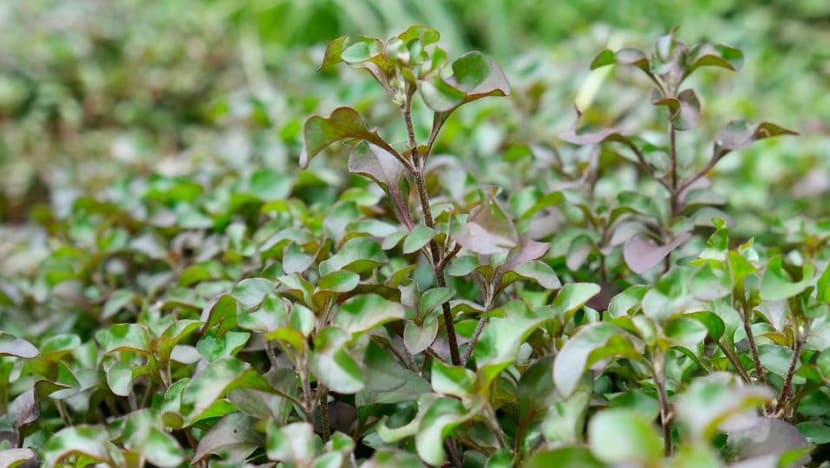
SFA’s Mr Goh said the agency is aware that different farmers are at different degrees of readiness to adopt technology.
“However, regardless of the stage they are at, there is always some form of suitable technology that can help raise productivity. For example, traditional farms can adopt technology such as drip irrigation and automated greenhouses to improve their yields.”
“We also understand that some long-time farmers who are used to their own farming methods may find it difficult to change.
“This is why we have various strategies in place to incentivise and encourage them … such as funding support and providing account managers to assist and advise farms,” he said.
READ: New S$30 million grant to help Singapore farms speed up production of eggs, vegetables and fish
One such fund is the S$63 million Agriculture Productivity Fund (APF), which funds technology to help farms boost yields and increase production capabilities.
As of end November 2020, S$42.6 million has been committed to help 118 companies, including vegetable, fish, egg, shrimp and beansprout farms.
VULNERABILITIES WILL BECOME MORE ACUTE: EXPERTS
Tech or no tech, farms worldwide face a potential reckoning on the horizon.
Dr Horton warned that the warmest year ever recorded was 2016, when there was "human-induced global warming, superimposed on the El Nino effect", referring to a warm, wet part of a naturally occurring weather cycle.
“Right now we are in a sort of neutral phase … The next big worry is when is the next El Nino is going to be, which would cause a huge spike in temperatures.”
The Intergovernmental Panel on Climate Change has also estimated that climate change will result in a decline in crop yields of up to 25 per cent by 2050.
At the same time, the United Nations projects that global food demand will rise by 60 per cent by 2050 due to global population growth.
“There is no assurance that global food production can keep up with global food demand," SFA's Mr Goh said.

Here, the Centre for Climate Research has sounded the alarm on a possible increase in daily mean temperature of 1.4 to 4.6 degrees Celsius towards the end of the 21st century, with more intense and frequent heavy rainfall, and a mean sea level rise of up to one metre.
With this urgency, especially in land scarce Singapore, Mr Goh emphasised that it is crucial for farms to adopt technology to produce more on less land.
“If farms do not leverage on technology, it will be very difficult to produce enough food locally for local production to be a significant buffer against import disruptions," he said.
IS THERE STILL A PLACE FOR OLD SCHOOL FARMERS IN THE FUTURE?
As Singapore charges ahead towards its goals of future-proofing its food security with technology, there have been concerns about what this spells for traditional farmers.
“If the ‘traditional farmers’ do not upgrade themselves and their farming systems, they will either work as a wage labour in industrial farming or leave the profession altogether,” said Associate Professor Md Saidul Islam, a coordinator of the Environment and Sustainability Research Cluster at the Nanyang Technological University.
READ: Lim Chu Kang to be transformed into high-tech agri-food cluster under SFA master plan
Sustainability and Environment Minister Grace Fu said last month that authorities would not “dictate” farming methods.
“But in the end, we'll look at what can you produce. And that to us is important because we have to deal with a land constraint and a land budget in a way. And then we have to meet our goals," she said.
SFA said it awards land by assessing both price and concepts that farms pitch, to make sure those “with the best concepts – concepts that employ … productive technologies to maximise food production” – get the land.
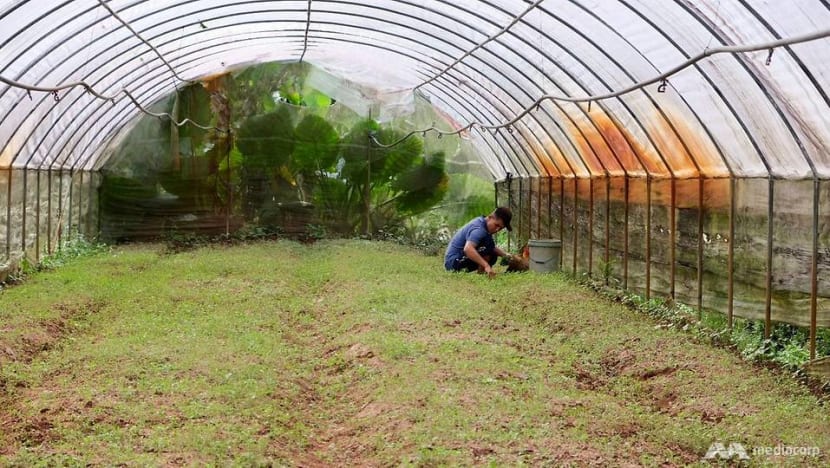
Mr Chai is doubtful about getting another space like his current 3ha plot.
Although he is not certain about where he will end up, he is confident about the value that traditional farmers, like himself, continue to offer society.
He pointed out that a lot of new players want to go high-tech, but they do not have the necessary farming experience.
“All these older farmers here have fine-tuned the processes over many years already, so they have a lot of value to add,” he told CNA.
Prof Teng agrees. “I’m a big proponent of having legacy farms. We don’t want all our food production to be from factory farms, controlled environment farms … There should be a diversity of farming methods," he said.
“Apart from food production and security, some of our smaller legacy farms might also be able to introduce diversity to diet, such as indigenous veggies.”
He noted how legacy farms in the US sell “heirloom varieties” that large commercial farms do not offer.
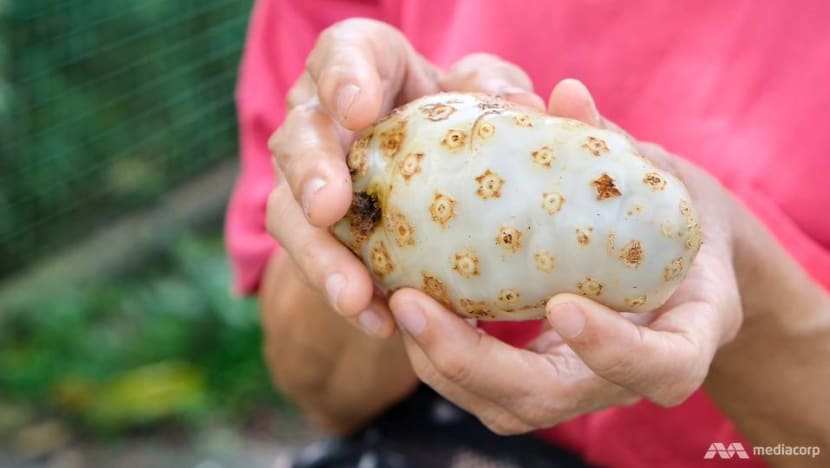
Another reason is more sentimental.
“Singapore changes so much in terms of landscape, it’ll be sad if we don’t have that rural landscape that is still part of our culture and history," he said, adding that it is a place for city folk to learn about traditional food production.
Nevertheless, Prof Teng acknowledged that the “bulk of food security” will have to come from high-tech farms.
OTHER WAYS TO BUFFER THE IMPACT OF CLIMATE CHANGE ON FOOD PRODUCTION
Focusing on local food production is also only one lever of food security.
It is impossible to ignore the fact that Singapore imports 90 per cent of its food from more than 170 countries.
This exposes it to price and supply fluctuations, as well as threats of food supply disruption and contamination internationally, Mr Goh said.
While Singapore works to tackle climate change at home, its success also relies very heavily on how well its sources handle their own food resilience.
READ: Tropical food farmers must grow more on less land, as climate policy shifts
“Therefore, developing environmentally friendly and climate-resilient production systems (with) the neighboring nations is necessary for Singapore. Singapore with its technological know-how can certainly help,” said Assoc Prof Islam.
Another big part of the equation: educating consumers and changing their behaviour.
Mdm Eng said: “The productivity is there – I have an excess of kampong vegetables to sell … but people’s preferences haven’t caught up."
“They still prefer the leafy Chinese vegetables that are harder to grow here,” she said.
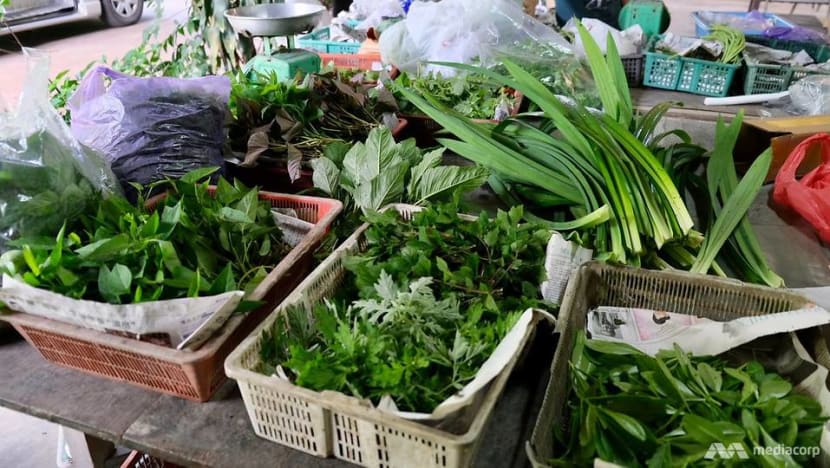
On changing consumer tastes, Dr Horton added the population should also be persuaded to shift their diet away from carbon-intensive meat towards more vegetables.
As Assoc Prof Islam put it, “focusing on technology is important, but it must be accompanied by developing new generations (that embrace) green reflexivity".
READ: Commentary: Is lab-grown meat a new frontier or a passing fad?
In addition, he argued that social policies and community engagements are necessary, specifically for issues such as curbing food waste.
Singapore produced 744 million kg of food waste last year, the equivalent of two bowls of rice per person per day, according to the Sustainability and Environment Ministry.
“A lot of consumers have never (grown vegetables before), they just buy it from a supermarket shelf, without knowing the work and time these plants need,” said Mr Chai.
He added that recent moves by authorities to distribute free edible seeds to households are a step in the right direction.
It will educate people about plant growth, he said, and perhaps sow seeds of interest in "farming" at home.
That too might go some way to boost Singapore’s food security aspirations amid the threat of climate change.
Listen to food security expert Dr Paul Teng talk to CNA Digital Chief Editor Jaime Ho about how Singapore, which imports 90 per cent of its food, tackles food insecurity in the latest episode of The Climate Conversations podcast:












